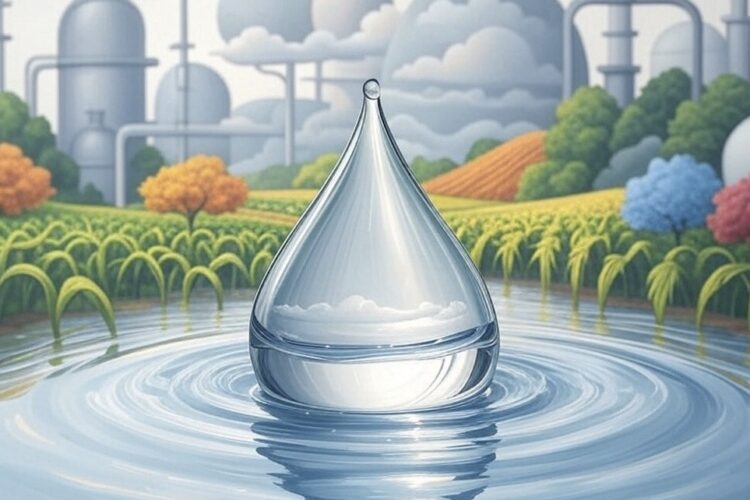Tap water often contains chemicals like chlorine, fluoride, lead, arsenic, nitrates, and PFAS, which come from agricultural runoff, industrial discharge, and aging pipes. These contaminants can cause health issues, including cancer, neurological damage, and hormonal disruption, especially in children and pregnant women. The EPA regulates water quality under the Safe Drinking Water Act, but outdated standards and unregulated chemicals like PFAS leave gaps. Testing water for bacteria, heavy metals, and VOCs is key, especially for well owners. Solutions include reverse osmosis or activated carbon filters to remove impurities and replacing lead pipes to prevent corrosion. Stricter rules and better infrastructure are needed to ensure safe drinking water. Check water quality with home kits or certified labs and use NSF-certified filters for protection.
Long Version
Tap water is a cornerstone of modern life, delivering essential hydration to millions daily. Yet, beneath its clear appearance, drinking water can harbor a range of chemicals and contaminants that raise concerns about water quality, public health, and environmental impact. From heavy metals to emerging pollutants like PFAS, the presence of impurities in municipal and well water systems has sparked widespread scrutiny. This article dives deep into the chemicals found in tap water, exploring their sources, health risks, regulatory frameworks, and solutions for ensuring safe drinking water.
The Landscape of Tap Water Contaminants
Drinking water, whether sourced from groundwater aquifers or surface water like rivers and lakes, is rarely free of contaminants. These impurities stem from natural processes, human activities, and infrastructure challenges. Broadly, tap water contaminants include chemicals, heavy metals, pesticides, pharmaceuticals, and disinfection byproducts (DBPs). Niche pollutants, such as per- and polyfluoroalkyl substances (PFAS) and microplastics, have also emerged as significant concerns.
Common Chemical Contaminants
- Chlorine: Widely used in water treatment to kill bacteria, chlorine ensures microbial safety but can form trihalomethanes (THMs), a type of DBP linked to cancer risks with long-term exposure.
- Fluoride: Added to many municipal water supplies to promote dental health, fluoride remains controversial due to potential links to bone and neurological issues at high levels.
- Nitrates: Originating from agricultural runoff, particularly fertilizers, nitrates can cause methemoglobinemia (blue baby syndrome) in infants by reducing blood oxygen levels.
- Volatile Organic Compounds (VOCs): These include industrial solvents and fuel components that leach into groundwater, posing risks of liver, kidney, and nervous system damage.
- Pharmaceuticals: Trace amounts of medications, from antidepressants to hormones, enter water systems through human excretion and improper disposal, raising concerns about endocrine disruption.
Heavy Metals
Heavy metals like lead, arsenic, and chromium-6 are among the most alarming tap water contaminants:
- Lead: Often introduced through corrosion of old pipes, lead exposure can impair cognitive development in children and cause cardiovascular issues in adults.
- Arsenic: Naturally occurring or from industrial discharge, arsenic is a carcinogen linked to skin, lung, and bladder cancers.
- Chromium-6: Known from industrial pollution, this heavy metal gained notoriety through the Erin Brockovich case and is associated with cancer risks.
Emerging Contaminants
- PFAS (Forever Chemicals): These synthetic compounds, used in products like non-stick cookware and firefighting foam, persist in the environment and are linked to immune system damage, liver issues, and cancer.
- Microplastics: Tiny plastic particles, often from degraded waste, have been detected in tap water globally, with unknown long-term health effects.
- Perchlorate: Found in rocket fuel and fertilizers, perchlorate can disrupt thyroid function, particularly in developing fetuses.
Disinfection Byproducts and Other Impurities
Water treatment processes, while essential, can introduce DBPs like THMs and haloacetic acids (HAAs), formed when chlorine reacts with organic matter. These are potential carcinogens and require careful monitoring. Additionally, coliform bacteria, though typically non-pathogenic, indicate possible fecal contamination, while radon—a radioactive gas—can dissolve into groundwater, posing inhalation and ingestion risks.
Sources of Tap Water Contamination
Understanding the origins of tap water contaminants is critical to addressing water quality issues. Key sources include:
- Agricultural Runoff: Pesticides, herbicides, and nitrates from farming practices infiltrate surface and groundwater.
- Industrial Discharge: Factories release heavy metals, VOCs, and PFAS into waterways, often exceeding regulatory limits.
- Pipe Degradation: Aging infrastructure, particularly lead pipes, introduces corrosion-related contaminants like lead and copper.
- Leaching: Natural minerals like arsenic or anthropogenic pollutants like PFAS seep into aquifers from contaminated soils.
- Municipal Water Treatment: While designed to purify, treatments can introduce DBPs or fail to remove emerging contaminants like pharmaceuticals.
- Household Practices: Improper disposal of medications or chemicals down drains contributes to trace pollutants.
Health Risks of Tap Water Contaminants
The health risks of tap water contaminants vary by substance, concentration, and exposure duration. Acute effects, like nitrate-induced blue baby syndrome, are rare but severe. Chronic exposure, however, poses greater risks:
- Carcinogens: Arsenic, chromium-6, and DBPs like THMs are linked to cancers of the bladder, lung, and liver.
- Endocrine Disruptors: PFAS and pharmaceuticals can interfere with hormonal systems, potentially causing reproductive and developmental issues.
- Neurotoxins: Lead and high levels of fluoride may impair cognitive function, particularly in children.
- Bioaccumulation: PFAS and heavy metals accumulate in the body over time, amplifying risks with prolonged exposure.
Vulnerable populations—children, pregnant women, and immunocompromised individuals—face heightened risks. Even low-level exposure to multiple contaminants can produce synergistic effects, complicating health assessments.
Regulatory Frameworks: Ensuring Safe Drinking Water
In the United States, the Safe Drinking Water Act (SDWA) empowers the Environmental Protection Agency (EPA) to set Maximum Contaminant Levels (MCLs) for over 90 contaminants. These standards aim to balance health protection with treatment feasibility. However, challenges remain:
- Outdated MCLs: Some standards, like those for arsenic, haven’t been updated in decades, lagging behind current science.
- Unregulated Contaminants: PFAS, perchlorate, and many pharmaceuticals lack enforceable MCLs, leaving gaps in protection.
- Local Compliance: Aging infrastructure and resource constraints can hinder municipal compliance with EPA standards.
Globally, regulations vary. The World Health Organization (WHO) provides guidelines, but enforcement depends on local governance. In developing regions, limited testing and treatment exacerbate risks.
Testing and Monitoring Water Quality
Regular testing is vital for identifying contaminants. Municipal systems typically monitor for regulated substances, but private well owners must proactively test for bacteria, nitrates, and heavy metals. Home testing kits can detect common impurities, while certified labs offer comprehensive analysis for PFAS, VOCs, and radionuclides like radon.
Key indicators of poor water quality include:
- Cloudy or discolored water (sediment or pipe corrosion)
- Metallic taste (lead or copper)
- Chemical odors (chlorine or VOCs)
If testing reveals issues, immediate action—such as filtration or contacting local authorities—is essential.
Solutions for Cleaner Tap Water
Addressing tap water contamination requires a multi-faceted approach, from systemic improvements to household interventions.
Water Treatment Technologies
- Reverse Osmosis: Highly effective for removing PFAS, heavy metals, and nitrates, though it requires maintenance and can waste water.
- Activated Carbon Filters: Common in pitcher and faucet systems, these reduce chlorine, VOCs, and some PFAS but are less effective for heavy metals.
- Ion Exchange: Targets specific contaminants like lead and arsenic, often used in whole-house systems.
- UV Disinfection: Kills bacteria and viruses but doesn’t remove chemical contaminants.
- Distillation: Removes most impurities but is energy-intensive and impractical for large-scale use.
Household Strategies
- Use certified filters (e.g., NSF/ANSI 53 for lead, NSF/ANSI 401 for pharmaceuticals).
- Flush pipes after periods of stagnation to reduce lead exposure.
- Boil water only for microbial safety, as it concentrates chemical contaminants.
- Store water in glass or stainless steel to avoid plastic leaching.
Systemic Solutions
- Infrastructure Upgrades: Replacing lead pipes and modernizing treatment plants can reduce contamination at the source.
- Stricter Regulations: Establishing MCLs for PFAS and emerging contaminants is critical.
- Pollution Prevention: Reducing industrial discharge and agricultural runoff through policy and innovation protects source water.
- Public Awareness: Educating communities about testing and filtration empowers informed choices.
The Future of Tap Water Safety
Emerging contaminants like nanomaterials and new pharmaceuticals pose ongoing challenges. Advances in detection, such as high-sensitivity sensors for PFAS, and treatment, like nanotechnology-based filters, offer hope. However, equitable access to clean water remains a global issue. Advocacy for stronger regulations, investment in infrastructure, and sustainable practices will shape the future of drinking water safety.
Conclusion
Chemicals in tap water—from chlorine and fluoride to PFAS and microplastics—reflect a complex interplay of human activity, infrastructure, and regulation. While municipal systems and regulations like the SDWA provide a foundation for safety, gaps in monitoring and treatment persist. By understanding contaminants, testing water quality, and adopting filtration solutions, individuals can protect their health. At the systemic level, modernizing infrastructure and tightening regulations are essential for ensuring safe drinking water for all. Armed with knowledge and proactive measures, we can navigate the challenges of tap water contamination and secure a healthier future.
Hashtags For Social Media
#tapwater #waterquality #drinkingwater #waterpollution #cleanwater #safewater #watercontamination #healthrisks #waterpurification #tapwatertruth #chemicalsinwater #pfas #heavymetals #waterfilters #reverseosmosis #fluoridefacts #chlorineconcerns #nitrateawareness #microplastics #endocrinedisruptors #watersafety #publichealth #environmentalhealth #safedrinkingwater #waterregulation #epawater #agriculturalrunoff #industrialpollution #purewatermatters #waterawareness
Related Questions, Words, Phrases
what chemicals are in tap water | which contaminants pollute tap water | how does chlorine affect tap water safety | is fluoride in tap water harmful | what are the health risks of lead in tap water | how do nitrates get into drinking water | what are pfas in tap water | how to remove heavy metals from tap water | what causes water pollution in tap water | how does water treatment impact tap water quality | are there pharmaceuticals in my tap water | what are disinfection byproducts in water | how safe is my drinking water from contaminants | can microplastics be found in tap water | what regulations protect tap water quality | how does the safe drinking water act work | what are the effects of arsenic in tap water | how to test tap water for pollutants | what are vocs in drinking water | how does agricultural runoff affect tap water | can tap water cause cancer | what are endocrine disruptors in water | how to filter pfas from tap water | is chromium-6 in my tap water dangerous | what are the sources of tap water contamination | how does pipe corrosion affect water quality | are there forever chemicals in tap water | how to ensure safe drinking water at home | what are the risks of coliform bacteria in water | how does industrial discharge pollute tap water | what are the benefits of reverse osmosis for tap water | how does the epa regulate tap water safety | what are trace elements in drinking water | how to detect radon in tap water | what are the long-term effects of tap water contaminants
For more information on water quality or to explore filtration options, visit the EPA’s website or consult a certified water testing laboratory.






